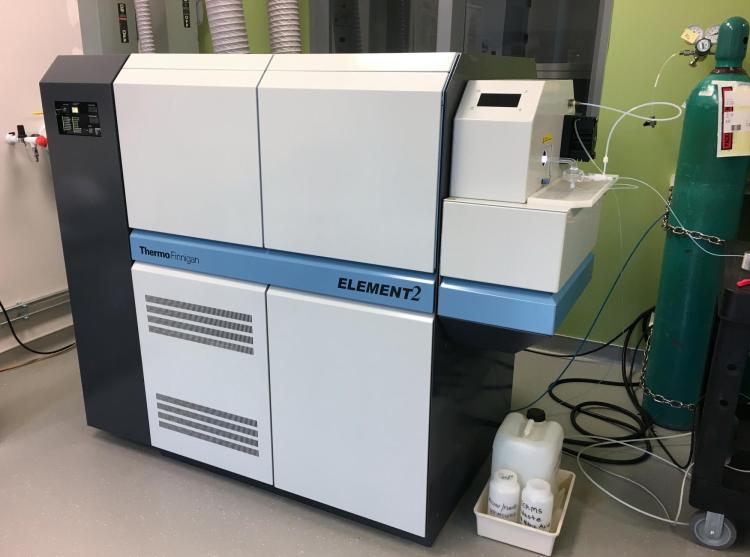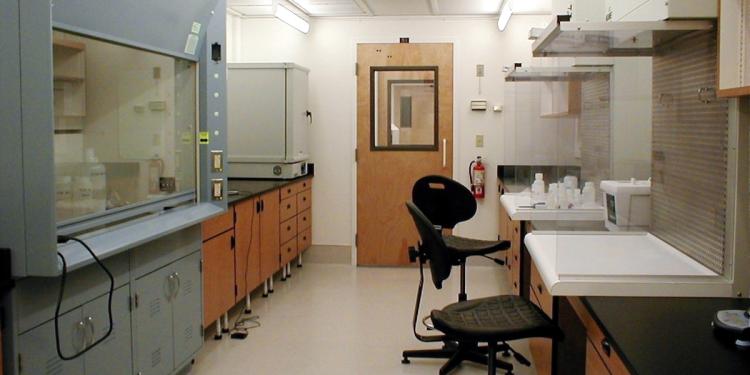ICP-MS Trace Metals Lab
We measure trace and minor element element concentrations in biogenic carbonates, including foraminifera, corals, and ostracods, to reconstruct past climates. These and other sample types are welcomed. Our main analytical tool is a Thermo Finnigan Element2 magnetic sector inductively-coupled plasma mass spectrometer (ICP-MS).
Haikal Bakar
Undergrad
Skye Fernandez
Undergrad
Danny Schmiegel
Undergrad
Jazmin Schwab
Undergrad
Services
Lab room: SEEL 118B
Foraminifera and other carbonates
This is our specialty. Routine analysis includes Mg/Ca, Sr/Ca, Cd/Ca, Zn/Ca, Ba/Ca, Li/Ca, B/Ca, U/Ca, Mn/Ca, Al/Ca, and Fe/Ca, but additional elements are also possible. Foraminiferal samples can either be sent pre-cleaned or they can be cleaned here at additional cost. Our routine cleaning includes both reductive (hydrazine) and oxidative (peroxide) steps, but oxidation-only cleaning is an option. We also offer a robust oxidation-only method for individual foram Mg/Ca and Sr/Ca analysis (IFA). Costs for carbonates are on a per-sample basis. Contact Tom Marchitto for details
Other sample types
We welcome inquiries about other sample types. If you can dissolve it, we can probably analyze it. Generally speaking, ICP-MS is well-suited for trace abundances of elements (sub-ppm in solution). Higher concentrations can be diluted to be within our working range, but in that case another method like ICP-OES may be more appropriate and less expensive. See this periodic table of theoretical detection limits to see whether ICP-MS is right for your application.
Other sample types and analytes require some method development, which typically requires a day of work at a fixed rate. Analyses that include numerous elements may require additional time and cost. After the method development, we typically can analyze up to 24 samples per day at a fixed daily rate. This means that analyzing just a few samples can be prohibitively expensive. If you have large numbers of samples (hundreds), please inquire about volume discounts.
Inquiries may be directed to Tom Marchitto. For other sample types, please include as much of the following information as you can:
What is the original sample matrix?
Are your samples digested, and if so, in what solution? (We can do some digestions, usually at additional cost. We run most samples in 2% nitric acid.)
What elements do you want to measure, and approximately what are your expected concentration ranges in solution (ppm, ppb, ppt, ppq)?
Roughly how many samples do you have?
Our ICP-MS
Our main analytical tool is a Thermo Finnigan Element2 magnetic sector inductively-coupled plasma mass spectrometer (ICP-MS).

Our clean room
Our facility includes a Class 1000 clean room for sample preparation. Here is a view looking from the clean room toward the instrument room.

Publications
Publications for Marchitto are included below




